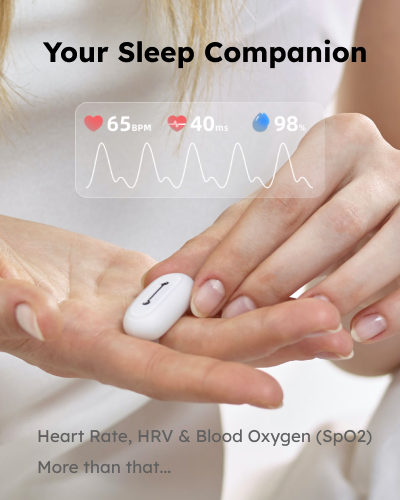- Home
- Upcoming #SLEEPON APP 3.0
- Upcoming #SLEEPON APP 3.0 Feature Sharing# – Sleep Factors
Upcoming #SLEEPON APP 3.0 Feature Sharing# – Sleep Factors

In the first two 3.0 update blogs, we shared information about sleep scores and ODI. In this article, let’s explore various sleep factors.
In the 3.0 upgrade, we will comprehensively assess individual sleep health from multiple aspects, including total sleep duration, sleep efficiency, blood oxygen saturation, ODI, Rapid Eye Movement (REM) sleep, sleep stages, and more.

Sleep Factors Explanation:
- Total Sleep Duration: Total sleep time reflects the time spent in light sleep, REM sleep, and deep sleep, including all sleep periods, including naps. Most adults need 7 to 9 hours of sleep for optimal performance and health, but individual sleep needs may vary. Generally, younger individuals require more sleep.
- Sleep Efficiency: Sleep efficiency reflects the percentage of time spent asleep compared to awake time. Achieving a sleep efficiency of 85% is considered a sign of restful and uninterrupted sleep for adults. Factors such as taking more than 20 minutes to fall asleep or experiencing prolonged or multiple awakenings can lower sleep efficiency, and it may decrease slightly with age.
- Sleep Onset Latency: Sleep onset latency refers to the time it takes to fall asleep at night, showing only the longest sleep onset time. Ideally, individuals should fall asleep within 15 to 20 minutes of lying down. Falling asleep within 5 minutes might indicate excessive fatigue.
- Blood Oxygen: Monitoring blood oxygen saturation during sleep helps diagnose potential health issues related to breathing and sleep quality, such as sleep apnea, chronic obstructive pulmonary disease (COPD), and cardiovascular problems. Continuous monitoring during sleep provides comprehensive data for accurate diagnosis and the development of appropriate treatment plans.
- Sleep Cycle (NREM and REM): Different sleep cycles reflect the body’s varied needs for repair, recovery, learning, and cognitive functions during different stages. Maintaining a healthy sleep cycle is crucial for overall health and bodily functions.

- REM (Rapid Eye Movement) sleep is associated with learning, memory, and cognitive function. It is characterized by increased brain activity, irregular heart rate, rapid eye movements, and vivid dreams.
- NREM (Non-Rapid Eye Movement) sleep is divided into three stages (N1, N2, and N3) with varying levels of relaxation and physiological activity. Deep sleep (N3) is essential for bodily repair and growth.
- ODI (Oxygen Desaturation Index): ODI measures the number of times blood oxygen levels drop during sleep, often used to describe sleep apnea. A higher ODI indicates more instances of breathing pauses during sleep, potentially negatively impacting health.
With the comprehensive assessment of these new sleep factors in the SLEEPON 3.0 upgrade, users can gain a more thorough understanding of their sleep quality and potential issues. The upgrade aims to provide a more personalized sleep experience for users.

SLEEPON 3.0 Upgrade: Your Voice Matters!
Dear SLEEPON community members, SLEEPON is undergoing a significant upgrade – SLEEPON 3.0! At this crucial moment, we want to hear your voice to understand your expectations and suggestions.
- Customized Experience:
Your feedback will help us better understand your needs to provide a more personalized sleep experience.
- Technological Enhancements:
We welcome your thoughts on new features, improvements, and innovations to ensure SLEEPON 3.0 meets your expectations.
- Community Building:
By sharing your opinions, you become a key member in shaping the future of SLEEPON and contribute to building our community together.
Share your suggestions in the comment section:
We invite you to leave your suggestions, expectations, or any thoughts on SLEEPON 3.0 in the comments. Feel free to discuss your most anticipated features, expectations for the upgrade, or share your personal sleep experiences.
For more updates on the 3.0 APP upgrade, subscribe and follow us.
Products
Company
Copyright © SLEEPON. All rights reserved.
SLEEPON keeps both Sleeponhealth and Sleepon.us due to the brand upgrading. We promise to provide the same products and service in both sites.











Leave a Reply